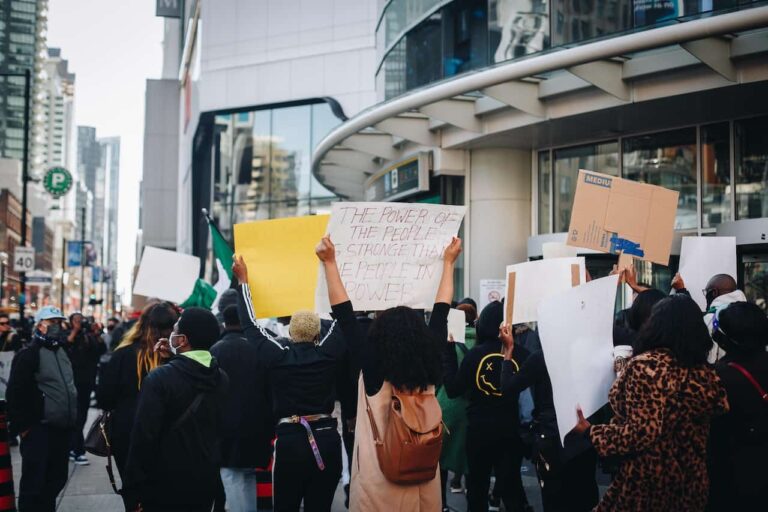Political tumultuousness denotes the capriciousness and ambivalence within the political terrain of a nation or locality. It encompasses a multitude of factors that possess the capacity to unsettle governance, such as societal disquietude, hostilities, economic predicaments, and venality.
Grasping the intricacies of global political turbulence assumes paramount significance as its ramifications reverberate across economies, societies, human rights, and international rapport.
Table of Contents
The causes of political instability
Political instability can arise from various factors and circumstances. Here are some common causes of political instability:
- Economic hardships: Economic vicissitudes, encompassing elevated unemployment rates, income disparity, inflation, and economic downturns, possess the potential to precipitate social restlessness and political instability. When individuals’ means of sustenance come under jeopardy, they often manifest their discontent through protests, strikes, and various forms of civil unrest;
- Issues of corruption and governance: Pervasive corruption, a lack of transparency, and ineffective governance erode public trust in political institutions. When citizens perceive their leaders as corrupt or unresponsive, it can ignite public demonstrations, protests, and even revolutions aimed at demanding accountability and systemic transformation;
- Social and ethnic fragmentation: Nations marked by deep-rooted divisions based on social, ethnic, or religious lines are more susceptible to political instability. Tensions and conflicts between different groups can escalate, leading to protests, violence, and in extreme cases, civil wars. Failure to address these divisions through inclusive policies and constructive dialogue can exacerbate the prevailing state of instability;
- Political polarization: The escalating polarization within societies, often fueled by the pervasive influence of social media and divisive rhetoric, has the potential to generate political instability. When political ideologies become increasingly extreme and individuals become entrenched in their own viewpoints, finding common ground and achieving consensus becomes arduous, resulting in political gridlock and societal unrest;
- Authoritarianism and absence of democratic institutions: The erosion of democratic principles, suppression of dissenting voices, and the concentration of power in the hands of a few can foster political instability. As individuals yearn for democratic freedoms, any attempts to stifle dissent can trigger protests and resistance against autocratic regimes.
The effects of political instability
Political instability has profound effects on various aspects of a society. Economically, it can lead to decreased investment, market volatility, and economic downturns. Socially, political instability often results in social unrest, protests, and even violence.
Human rights violations can become rampant during times of instability, as governments may prioritize power consolidation over protecting individual liberties. Moreover, political instability can have international implications, such as refugee crises, regional conflicts, and diplomatic tensions.
Case studies: political instability in different regions
Political instability is projected to rise in numerous countries worldwide by 2023, encompassing both developed nations and leading emerging markets like India, Brazil, and Saudi Arabia. This increased instability poses significant challenges to governments, businesses, and global trade, potentially resulting in disruptions, defaults, and hindered commodity flows.
In this analysis, we will delve into the key drivers of political risk and highlight specific regions that are expected to experience substantial declines in their stability scores.
Fading legitimacy of governments
The fading legitimacy of governments emerges as a central driver of political risk. As those in power struggle to navigate economic recoveries, address the human toll of the pandemic, or grapple with internal political divisions, civil unrest intensifies. The resulting challenges contribute to a decline in stability across various regions.
Impact of the credit binge
The unprecedented credit binge of 2020, undertaken by leaders desperate to buoy their economies, has exacerbated political risk globally. Around 84 countries witnessed exceptional increases in their debt-to-GDP ratios by at least 10 percentage points last year. This surge in debt creates significant economic vulnerabilities and amplifies the potential for political instability in these nations.
Case studies:
- Brazil: Brazil is among the countries predicted to experience a significant decline in stability, with a score reduction of over 0.5. The country has been grappling with economic challenges, internal divisions, and the repercussions of the pandemic. The fading government legitimacy and intensifying civil unrest pose substantial risks to political stability in Brazil;
- Saudi Arabia: Saudi Arabia, an influential emerging market, also faces an increased risk of political instability. The government’s efforts to engineer economic recovery, coupled with the need to address the social and economic consequences of the pandemic, create significant challenges. Political divisions within the country further contribute to the growing instability;
- The Philippines: The Philippines, another nation at risk, is confronted with a decline in stability. The government’s response to economic recovery, pandemic aftermath, and internal political divisions strains its legitimacy. These factors, combined with civil unrest, intensify the risk of political instability in the country;
- Eastern European emerging markets: Several eastern European emerging markets, including Ukraine, face a significant decline in stability. Economic recovery efforts, the burden of the pandemic, and internal political divisions weaken the legitimacy of governments in these regions. These factors heighten the potential for civil unrest and political instability.
Managing political instability: strategies and solutions
Addressing political instability requires a multifaceted approach. Diplomacy and conflict resolution play crucial roles in mitigating conflicts and fostering peace. Strengthening institutions and governance helps build stable foundations for political systems. Promoting economic development and social justice can address some of the root causes of instability. International cooperation and assistance, through organizations like the United Nations, can contribute to stability by facilitating dialogue and providing support to affected nations.
Future outlook: trends and predictions
The future of political instability is shaped by emerging trends. Technological advancements, such as the rise of social media, can amplify grievances and mobilize populations.
Climate change poses challenges to stability, as resource scarcity and environmental degradation can exacerbate conflicts. Shifting power dynamics on the global stage, including the rise of new economic powers and changing alliances, may influence political stability.
Read also: What is the Fragile States Index, measuring political and social unrest: how can it prove useful












